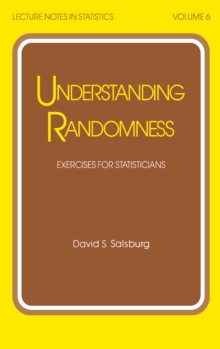
The Theory and Applications of Statistical Interference Functions PDF
by D.L. McLeish, Christopher G. Small
Part of the Lecture Notes in Statistics series
Description
This monograph arose out of a desire to develop an approach to statistical infer- ence that would be both comprehensive in its treatment of statistical principles and sufficiently powerful to be applicable to a variety of important practical problems.
In the latter category, the problems of inference for stochastic processes (which arise com- monly in engineering and biological applications) come to mind.
Classes of estimating functions seem to be promising in this respect.
The monograph examines some of the consequences of extending standard concepts of ancillarity, sufficiency and complete- ness into this setting.
The reader should note that the development is mathematically "mature" in its use of Hilbert space methods but not, we believe, mathematically difficult.
This is in keeping with our desire to construct a theory that is rich in statistical tools for infer- ence without the difficulties found in modern developments, such as likelihood analysis of stochastic processes or higher order methods, to name but two.
The fundamental notions of orthogonality and projection are accessible to a good undergraduate or beginning graduate student.
We hope that the monograph will serve the purpose of enriching the methods available to statisticians of various interests.
Information
-
Download - Immediately Available
- Format:PDF
- Publisher:Springer New York
- Publication Date:06/12/2012
- Category:
- ISBN:9781461238720
Other Formats
- Paperback / softback from £73.75
Information
-
Download - Immediately Available
- Format:PDF
- Publisher:Springer New York
- Publication Date:06/12/2012
- Category:
- ISBN:9781461238720










